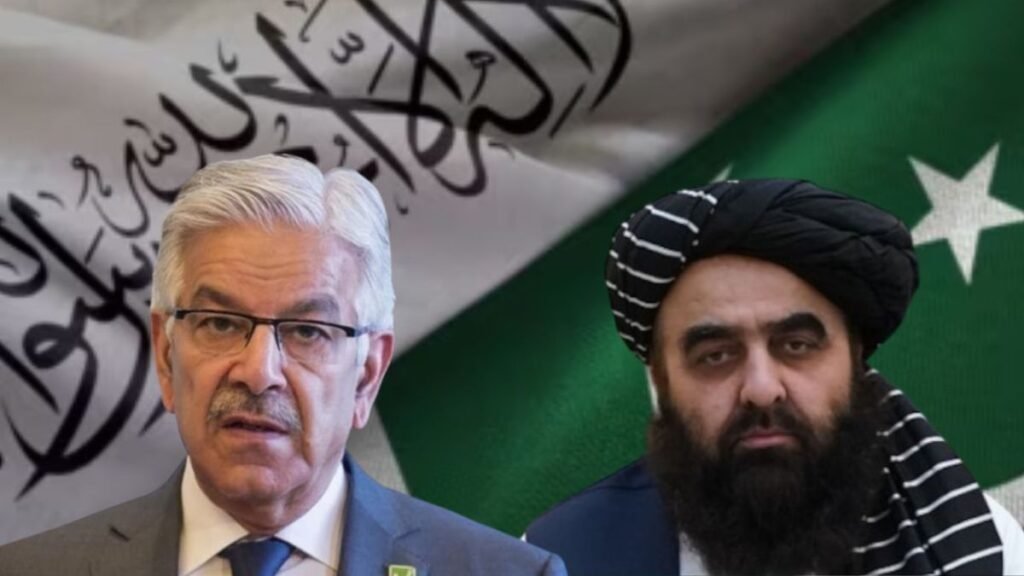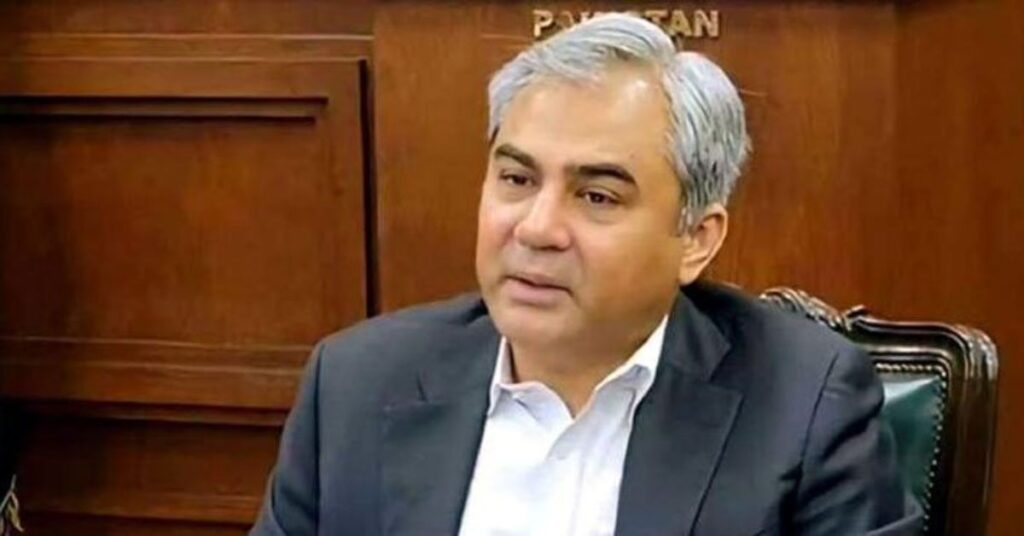ISLAMABAD (Kashmir English): The poor performance of the Indian-owned Rafales against Pakistani Air Force (PAF) has led to an altercation between the Pakistan’s arch rival and the French government with both shifting the blame of dismal performance on each other, The National Interest has reported.
“India and France Are At Each Other’s Throats Over the Dassault Rafale Fighter,” wrote the American bimonthly international relations magazine on May 28, 2025.
“Paris is punching back at New Delhi—pinning the losses on maintenance and pilot error rather than deficiencies in France’s most advanced fighter jet,” the American magazine wrote as the two countries argue angrily with each other in the backdrop of poor Rafale Fighter performance against the PAF.
The magazine is published by the Center for the National Interest, a public policy think tank based in Washington, D.C., that was established by former U.S. President Richard Nixon in 1994 as the Nixon Center for Peace and Freedom.
The magazine wrote that dismal showing of India’s expensive French-built Dassault Rafales in its recent war against Pakistan has triggered a wave of recriminations between the Indian and French governments.
Unimpressive display of the Dassault Rafales
“Not only has the unimpressive display of the Dassault Rafales in the opening phases of the recent conflict come as a shock to the world, but other clients of French defense contractors are having second thoughts.”
Last week, the magazine reported that the government of Indonesia has launched an audit of its recent deal with Dassault to purchase a handful of the fighters.
“Though no reason was given for the audit, it is transparently clear that Jakarta is worried about the poor performance of the Indian-owned Rafales against what many assumed was an inferior Pakistani Air Force,” the magazine reported.
“This week, in order to salvage the Rafale’s reputation, Paris is punching back at New Delhi—pinning the losses on maintenance and pilot error rather than deficiencies in France’s most advanced fighter jet.”
The magazine quoted what it said unconfirmed reports in the international press and across social media saying that the Indian government is refusing to allow Dassault’s audit team to gain access to India’s arsenal of Rafales.
“Dassault’s auditors want to inspect the Indian fleet of Rafales to ensure that there are no technical problems that the Indian Air Force (IAF) may have missed.”
The Indians are certain to be twitchy about this request. Why? New Delhi understandably fears the French auditors’ main purpose is to shift the blame on the poor performance of the Dassault Rafales onto the IAF itself.
Following the loss of at least one of India’s Rafale jets in the opening phase of its recent war with Pakistan, some have speculated that the Rafales were not the problem at all.
Instead, they have insinuated that poor IAF pilot training and lax maintenance standards over the course of many years are to blame.
The Indians categorically deny that this is the case. And indeed, though Indian standards may have contributed to the catastrophe, a simpler explanation is more likely: the French are trying to cover for the fact that their complex Rafale jets are no longer superior enough to Pakistan’s Chinese-built aircraft to justify their vastly higher price tag.
The magazine further wrote there is ample evidence to suggest that Dassault, whose pride has been clearly wounded, might have merit to its concerns.
After all, in December 2024, the Comptroller and Auditor General (CAG) of India and the Parliamentary Standing Committee on Defence reported on a recruitment crisis that was affecting India’s military.
According to its reports, the IAF was “grappling with a critical shortage of pilots”—a shortfall that “increased from 486 in February 2015 to 596 in 2021, underscoring the growing challenge in maintaining operations readiness,” as Shivani Sharma of India Today reported on December 20, 2024.
The CAG report is even more damning of the IAF’s tireless but ultimately unsuccessful efforts to recruit an additional 222 trainee pilots between 2016 and 2021.
Personnel shortages delayed the attempts by the IAF to repair operational issues with critical training aircraft, such as the Pilatus PC-7-Mk-II.
Without reliable training birds, coupled with a serious lack of qualified pilots, the IAF was poised for a failure if war erupted, the magazine said.
As for the Parliamentary Committee, they indicated that the pilot-to-seat ratio of 1.25:1 for fighter aircraft was insufficient for “high-intensity operations” of the kind that defined India’s four-day war with neighboring Pakistan.
Listing the Indian failures, the magazine said the IAF then possessed a meager 31 fighter squadrons, when the country’s air doctrine called for a minimum of 42.
“The IAF then failed to phase out older aircraft and bring in new ones in a timely manner, further degrading its defense readiness.”
“Clearly, the French auditors are aware of these issues. They were well documented, but ultimately went unaddressed for a decade before the war erupted earlier this month. Nothing the Indian government did to resolve their aircraft and pilot shortages worked.”
So, the question then becomes: why did those Rafales get shot down by Chinese-built Pakistani Air Force (PAF) warplanes and their Chinese-made PL-15 air-to-air missiles?
Was it because the Indians bought overestimated French weapons and platforms, or was it simply because the Indian military was poorly prepared for the fight at hand?
Of course, the crisis within the IAF cannot by itself explain the excellent performance of Pakistani PL-15 missiles against what were supposedly India’s superior air capabilities.
In other words, despite whatever readiness issues there were with the IAF, they cannot camouflage the problems with the French weapons and warplanes that India was using against Pakistan.
Nor should anyone dismiss the very real strides the Chinese have made in terms of producing systems that are on par with, or perhaps even better in some cases, than the expensive and complex Western systems, the magazine wrote.
Meanwhile, the Indians are sharing their displeasure with Dassault, the French maker of the Rafale warplane, publicly.
One of India’s biggest gripes against Dassault is that the French firm has persistently refused to share the source code for their Rafales with the IAF, despite India’s position as a longtime client.
While some may assume that this is simply to protect Dassault’s valuable intellectual property, the fact remains that the Indians need access to the source code to ensure seamless maintenance over the avionics suite, the complex mission systems, and to maintain key weapons integration.
“Failure to hand that over to the IAF by Dassault is needlessly complicating basic operations for an IAF that has already proven itself to be unprepared for high-intensity conflict.”
The Chinese have been having great fun with these stories on social media. After all, why shouldn’t they? Chinese weapons and warplanes outperformed expectations in the war.
When news about the inability of India to access Dassault’s source code broke—at roughly the same time India captured an intact Chinese PL-15 missile—one of Beijing’s so-called “wolf warrior” diplomats took to X to mock New Delhi: “India spent $288 million per Rafale, and they don’t even have access to the source code.
These Indians also claim they can ‘extract the software’ from the burnt out wreckage of a PL-15 missile. Yet, they can’t even access the core functions of their own Rafale jets?”
The magazine concluded that India was unprepared for the high-intensity of the war with Pakistan at the start. That is why New Delhi rapidly escalated the conflict in a bid to outpace the Pakistanis.




